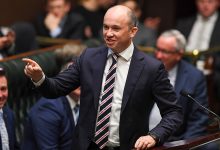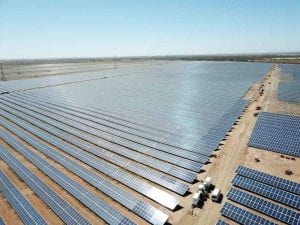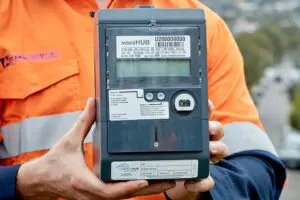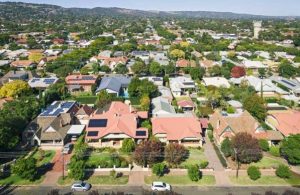There are growing signs that state governments will seek to carve their own paths in driving a transition to clean energy, with NSW energy minister Matt Kean saying he would push ahead with his state’s ambitious clean energy ambitions “whether Canberra likes it or not”.
Speaking during a webinar “Who Rules the Market” co-hosted by Ashurst and RenewEconomy on Wednesday, Kean said he did not like the look of the capacity market mechanism promoted by federal energy minister Angus Taylor and put forward as an option by the Energy Security Board.
Kean also flagged his preference for direct talks with the owners of the state’s ageing coal generators to prevent any early and unexpected exits as his government puts in place its renewable infrastructure roadmap. Victoria adopted a similar route with EnergyAustralia, the owner of the Yallourn power generator.
“I think what we need is some kind of ability to directly negotiate with the owners of existing assets, like the Victorian Government did with Yallourn, to ensure that we all get certainty about what the time horizon is, with regard to the closure,” Kean said.
“So I think in the current environment, the best way to keep the existing stuff in is not a market mechanism, it would be a direct contract, or one that would facilitate a managed exit of that plant.”
Kean said the NSW government’s ambitious Electricity Infrastructure Roadmap, which has already been enshrined in state legislation, was already working to bring new dispatchable generation into the system, ahead of the closure of the state’s coal fired generators.
The state plans five renewable energy zones, and has had more than 50 gigawatts of wind, energy and storage proposals for two of those zones – the Central West and New England. He spoke of the possibility of fast-tracking the south-west zone thanks to the new transmission link to South Australia.
Kean made it clear that New South Wales would push ahead with its energy transition, despite potential opposition from the Morrison federal government.
“A fragmented approach to dealing with the NEM is not the best way, but I can’t let the perfect be the enemy of the good,” Kean said.
“I’ve got my own challenges here in New South Wales to keep the lights on, drive prices down and set our economy up for that that low carbon future that we know is coming – whether Canberra likes it or not – and we’ve got to crack on with it.”
Energy ministers were recently presented with a set of proposed energy market reforms by the Energy Security Board, which included a controversial plan to establish a new “physical” Retailer Reliability Obligation, that would see large coal and gas generators paid to avoid early closures.
But several states have already begun implementing their own plans for managing the exit of their ageing fleets of coal fired generators, including through the creation of new Renewable Energy Zones, that will support investment in new replacement generation capacity, using wind, solar and energy storage projects.
Kean suggested he was sceptical that the creation of a ‘physical’ Retailer Reliability Obligation (PRRO), as has been recommended by the Energy Security Board, was the right approach to managing the exit of coal fired generators.
“I’m greatly concerned about the early exit of coal. So there needs to be a mechanism to ensure that we do have that orderly transition,” Kean told the forum.
“We do need to have a plan to keep the existing stuff going until the new infrastructure is built… I’m not sure a physical RRO is the right way to do that. We want to see a contracting mechanism available, we think that would be a better way to deal with these things.”
Kean said that he did not want New South Wales consumers ‘paying twice’ for electricity reliability, hinting that there could be a stronger push from state governments to carve their own path – as Victoria has already begun to do – on the energy transition.
“Obviously, we’re very supportive of making sure that we have a reliable grid,” Kean said.
“But we don’t want New South Wales consumers to pay twice for the same infrastructure there. We’ve got, as I said, a legislative pathway to having that dispatchable capacity.
You know, we’ve got a clear backup plan to build two gigawatts of long duration storage by 2030, as well as additional firming, if we need it to meet our energy security target here in New South Wales.”
Simon Corbell, the head of the Clean Energy Investor Group, said he was concerned about a proposed ‘congestion management model’ that was included in the ESB’s package of recommended reforms, because it would increase uncertainty for investors in forecasting future revenues for new wind and solar projects.
“The Congestion Management Model remains the issue of greatest concern to Clean Energy Investor Group members,” Corbell said.
“The reason for that is that whilst the ESB has properly identified the problem – which is how do you manage [network] access in the NEM outside of REZs and how do you deal with congestion in that context – they continue to rely on a locational marginal pricing mechanism to inform the way that mechanism operates.”
“We say that LMPs as a framework are mechanisms that are designed to deliver dispatch efficiency, and they’re very good at doing that. But they’re less effective at allowing investors to be able to predict revenues with any reasonable level of certainty.”
Chair of the Australian Energy Market Commission, Anna Collyer, said that work on the ESB’s proposed market reforms was still a work in process, and that further design work would be undertaken.
“The recommendations that the ESB has made will go through a further detailed consultation and design phase, using the PRRO as a starting point,” Collyer said. “Because what we want to do is think about that longer term future and what do we need by way of valuing capacity in a market as it transitions.”
“We think that idea of investigating how we ensure that we have the right mix from time to time, and what is the best way of giving the certainty to investors of the return that they get from the market, is something that is worth investigating carefully.”
Kean said that he had “provided some pretty clear guardrails” to the ESB regarding how he would like it to proceed in the ongoing development of its proposed energy market reforms.
He said that State governments will wrestle back some control of the process, which as largely been driven by the federal government at the behest of a handful of large incumbent coal-fired generators.
“The owners of existing generation, Origin, Energy Australia, all these forces combined to try and block the roadmap because they didn’t want more competition in the market,” Kean said.
“Well, I say competition is a good thing. I say competition is in the interest of consumers and that’s been borne out by what we’re seeing with the oversubscription of our renewable energy zones.”
Note: A recording of the webinar will be posted on Thursday on RenewEconomy.










